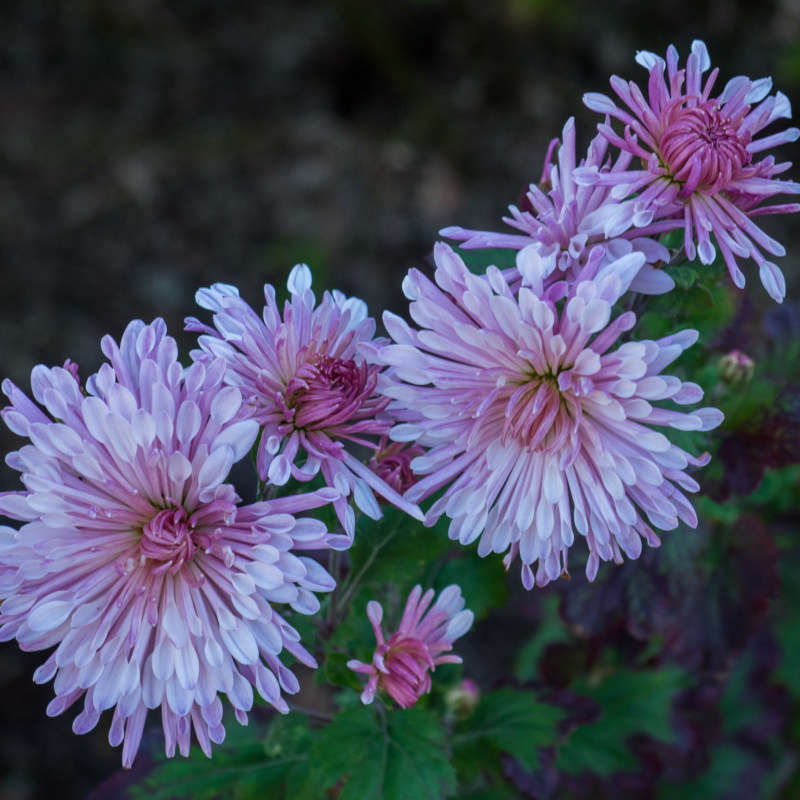

Chrysanthemums, native to China, will thrive in USDA zones 5 to 9 and flower in many different shapes and colors, from varieties that look like pompoms, to spider mums, quilled mums, and anemone mums with tight button centers.
Hardy chrysanthemums are “gaudy flowers whose place is near the house,” wrote the 20th century garden designer Russell Page. By “gaudy,” we assume he meant colorful, cheerful, and extremely capable of improving the mood of anyone who walks past a clump.
Although they are typically planted as annual flowers in late summer or early autumn—only to be replaced the next year—chrysanthemums are as happy as any other daisy to return year after year in the garden. The trick is to ignore the advice of plant shops and nurseries, which suggest you put chrysanthemums in the ground when they are blooming. To coax them into revealing their perennial nature, chrysanthemums need to be planted in springtime to give them many warm weeks to develop healthy root systems to survive cold winter months.
Don’t overlook all the different kinds of chrysanthemums available: from round pompoms to slender-petaled spider chrysanthemums, there are more than 100 varieties in production in the US (and even more in England, where they have more lovely cultivars of every kind of flower, it seems).
In a container, use chrysanthemums as colorful punctuation points to flank an entryway or path. In an edible garden, plant them at the edge of the beds to repel insects. To interplant with flowers, allow chrysanthemums to mingle with other late-season perennials including coneflowers, asters, and alyssum.